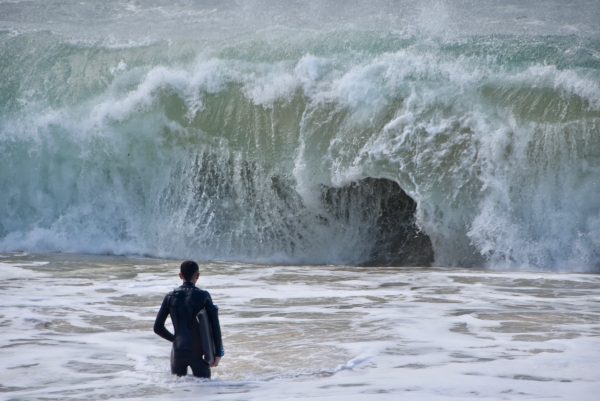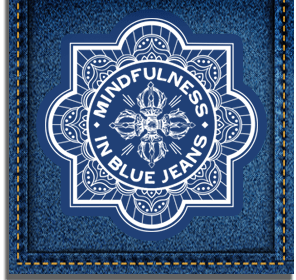Dread.
I led a couple of sessions about dread recently and wanted to share a high-level overview of three insights I’ve gained while working with this intense emotion.
I’ve always felt like dread was an invisible – yet impossibly heavy – blanket that kept me from being able to move. I thought of dread as being this static, monolithic THING.

But then I noticed that there was also a racing urgency contained within. There’s an energy that seeks to stave off the dreaded event, if not the dread itself. This feeling wasn’t just an immobile blanket … it was also a rushing, towering tidal wave.
I also saw the way dread shifted depending on various factors, like the time of day or quality of sleep. So it not only had movement, but its fluctuations were subject to the laws of cause and effect (which will sound familiar to those who have heard me discuss karma).
These characteristics led me to my first insight: dread is not a thing. Dread is a process.
The recognition of dread’s movement, fluctuations, and existence as a process led to my next realization: if dread is a moving, changing process, then something must be perpetuating it.
What I discovered was that dread shares a factor with so many other emotions: it self-perpetuates by feeding off of its own momentum. When we feel angry, we don’t usually just feel angry about the thing we think we’re angry about. We also feel angry about the fact that our ease has been thrown into a raging turmoil. We usually feel sad about feeling sad, depressed about being depressed, happy about being happy …
… and we feel dread about feeling dread.
But dread is a process, and that process is necessarily changed when we change the object of our attention. If we make the process ITSELF the object of our attention, we change its momentum. So how do we do that?
One way is by using a technique that arose from the third insight: disintegration. Not disintegration in terms of “poof, it disappeared” (although that would be nice too), but literal dis-integration: separating the components of the process.
The physical, mental, and emotional components of dread – each of which are processes themselves! – create interconnected feedback loops. A mental storyline sparks an emotional reaction, which amps up the body’s fight-or-flight response … and that response “confirms” to the subconscious mind that there really is an emergency. We’re off to the races.
A mindfulness practice that focuses on each component individually – typically while using the breathing as an anchor – allows us to loosen these links, which robs the cycles of the fuel they need to perpetuate.
This gives us a solid foundation for understanding these links in real-time, as well as increasing our familiarity with each individual component. This familiarity with how each piece REALLY is (as opposed to the way we fear it WILL be) eases the discomfort that comes with unfamiliarity – which our fight-or-flight mind perceives as unsafe rather than simply uncomfortable. In this way, we dismantle this crippling contraption from several angles at once.
Of course, all of this isn’t to say that we’ll never feel dread again. It’s part of the package we signed up for (or more accurately, a couple of OTHER people signed us up for some number of decades ago). But if we can make our experience of the process of dread a little less dreadful … well, THAT’S something I’ll sign up for personally.
Questions? Comments? Ready to break some links? Drop me a line or set up some time to dis-integrate dread.
